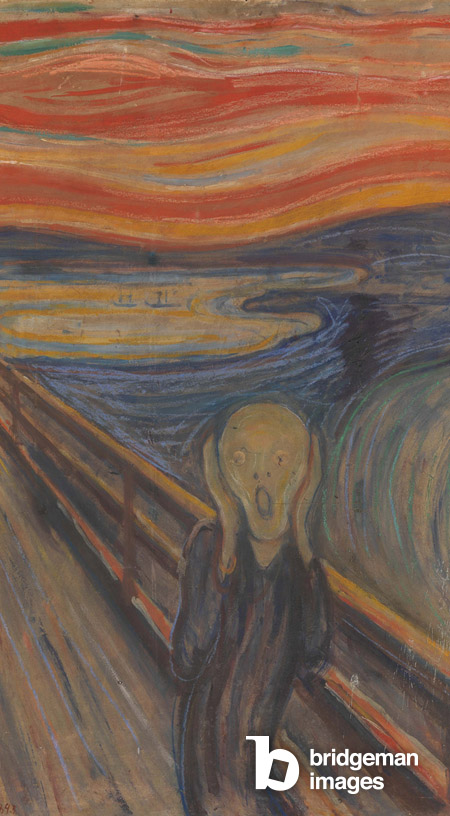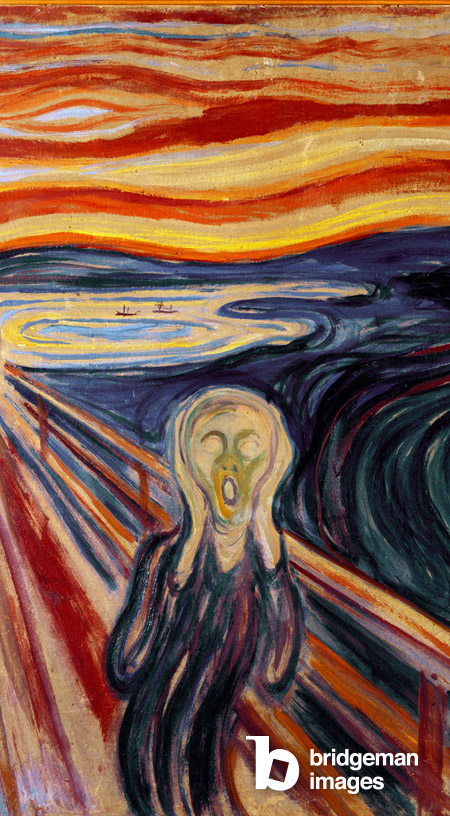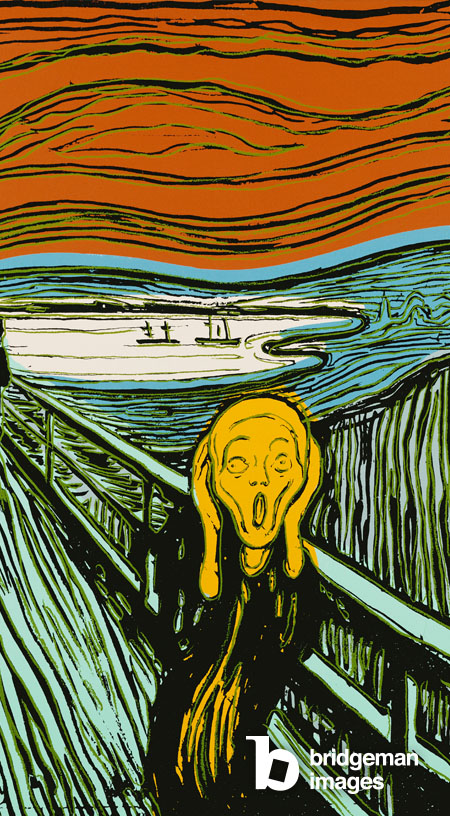Published 20/10/2023
In 1883, Edvard Munch crafted what is now a globally renowned haunting face upon a trepid backdrop of muted colour susurrations. It remains an icon for artists, art lovers, and the average soul who may gaze upon it. Though he delivered many a masterpiece, this one stands out as equal parts compelling and equal parts harrowing for all the senses.

A Painting That Speaks of Pain
The painting is said to be one of the most intriguing throughout the whole of history. It depicts an almost faceless face somehow both lacking features yet embodying multitudes of expression while appearing to scream into the void. However, it is important to highlight that the figure itself is not the one to actually scream or make any noise at all. No, the thundering emotion comes instead from nature. The figure? Simply trying to block out the noise all around it. Swirling and macabre colours surround the figure, who is standing plainly on a bridge, arms raised high to their face. There is no assigned gender to speak of, which is perhaps one of the key reasons as to why it has remained such a staple representation of both fear and generalised expressions of anxiety.
His Inspiration?
From the voice of Edvard Munch came the true tale of inspiration that led to this fascinating and haunting picture. He was leaning upon a fence feeling exhausted as his two companions walked on into the distance. It was in this moment that he heard ‘a scream that ripped through nature’. This haunted him, but also fed his artistic fuel and sparked the explosive eruption of a painted symphony that is both heavily discussed and revered today.
Techniques and Themes
Technique wise, there are significant strokes of colour that dominate the canvas. Expressionism is the main style, and it is apparent in the bold choices and compelling strides that catch the eye. There is an overwhelming contrast on the page between the fire-like orange burning fiercely in the sky and the dense, sombre blue and green that swirl in the water beneath the bridge. This only serves to exacerbate the true intense nature of the painting, exhibiting a clear representation of conflict, turmoil, and fear. Often compared to the stylistic lingering of Van Gogh with Starry Night and Sunflowers, it is clear how Munch embodied this into his own work.
The Artist
Heavily burdened with genius visionary, Edvard Munch gifted the world with multiple creations of intriguing artistic instalments. From his weird and wonderful abstract pieces including Anxiety and Vampire to the expression-filled self-portraits, he crafted with a style like we have never seen again. His main themes were apparent and included an arguable obsession with the human psyche and everything it entailed from development stages in pieces like Puberty to visceral representations of mental health.
The Story
His life was shaped by tragedy and religious notions that were instilled in him at a young age throughout his formative years until he reached adulthood. His father was in fact a devout Christian who believed in the rawest aspects of this religion and even used it to blame the deaths of Munch’s mother and sister on both sin and the need for punishment. This was no doubt the leading inspirational factor that drew Edvard to such themes shrouded in darkness and intensity. He was, by all accounts, a burdened soul and his work often reflects this. His fascination with the human mind and all of its potential for darkness is what breaks through to the page through his expressionism and symbolism most of all.

Facts About the Scream Painting
Now it is time to digest some interesting facts about the painting from Munch to dive into its history a little more and uncover some more about the significance it has held over the course of time.
A Part of a Wider Collection
The Scream is one painting in a larger collection known simply as The Frieze of Life. Within this narrative, for each depiction surely tells a story of its own, there is the almost equally as famous Madonna, The Dance of Life, Dead Mother and Child, The Kiss, Vampire, Anxiety, and Jealousy. This collection speaks of the deepest and purest human emotions that channel both darkness and inner turmoil. Munch’s themes are true to his overarching artistic stylings, and there is a noticeable presence of expressionism and undeniable symbolism throughout.
This Painting Was Stolen Twice
The Scream has been so ardently sought after throughout its life’s course that it has been stolen two times to date. The first theft took place on the day of the opening ceremony for the 1994 Olympics, February 12th. Fortunately, the painting was recovered a mere few months from the date of the initial crime, and it was undamaged too. It was returned to the National Museum where it hangs today. However, it was stolen again since, ten years later in 2004. Alongside its sister painting, Madonna, it was removed once more from the gallery and not returned until two years into the future.
There Are Two Versions of This Picture
Two versions exist in the world, the most famously known is held in the National Museum in Oslo, and a second version was created in 1910 which is displayed in the Munch Museum. The lithograph came two years after the original painting and is still a striking ensemble of pain and artistic deliverance but holds none of the original’s colour.
Turned Into an Emoji
Such is the status of this magnificent piece of art, that it has even transformed into modern life as an emoji. You can find this on your phone without too much searching. Just look for the little yellow face with whites for ‘eyes’ holding its hands up to its cheeks and there you have it. It is considered that Munch would enjoy this a lot, as he wished for his art to transcend the barriers of time and become what it was supposed to become.
You May Recognise It in Popular Culture
As well as making it into the history books of emoji culture, The Scream can also be found across the world of media and popular culture. Have you ever watched the cult classic horror movie, Scream? Well, in this film, you will find the main killer donning a mask akin to Edvard’s depiction of terror. This is where the inspiration truly comes from.

Where Is It Displayed?
Currently hanging in the National Museum of Oslo, this painting remains an iconic display piece for visitors from all over the world. This is considered to be the main version of this painting, but the other hangs in the Munch Museum, also in Oslo.
What Is the Scream Valued At?
The value of this painting is currently standing at just under $120 million. It is, in fact, going down in history as the most expensive painting to ever be sold in the world of fine art and expressionism. The owner remains unnamed.
The Scream painting has, without a doubt, stood the true test of time. Adored, feared, and redistributed widely, it is a clear representation of fear, anxiety, psychological torment, and the unknown perils that lie in the great chasm of nature. Edvard Munch is heralded, as he should be, as one of the greats.
Explore our selection of Expressionist works.


